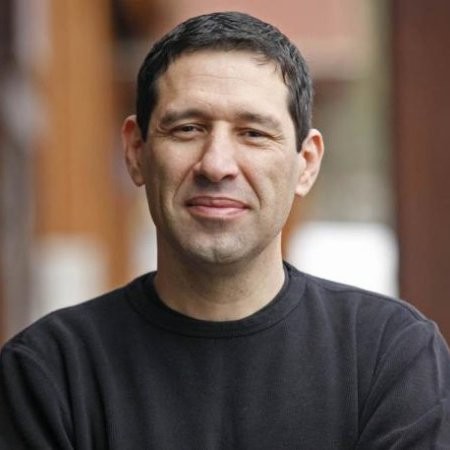Author: Kaya Stanley, Board Chair and CEO, CRMBC
Welcome to a new feature where we talk with our members and explore workers’ compensation through their experiences. Today’s spotlight shines on Ray Villaman, the owner of the Tahoe Restaurant Group and a connoisseur of fine dining and savvy business practices.
In the restaurant industry, the organized chaos of the dinner rush is matched only by the complexity of managing these intricate businesses; there’s an underlying challenge that often gets overlooked: workers’ compensation. Ray Villaman, the seasoned owner of the Tahoe Restaurant Group, sat down with us to peel back the layers of this issue and share his transformational journey with CRMBC.
“It was a big surprise for me, spending 25 plus years in the industry, to realize and come to the conclusion that how little I knew about workers’ comp and how I could be more involved,” Ray confessed, setting the stage for a candid conversation about the pitfalls of passive management in workers’ compensation cases.
From Passive to Proactive: CRMBC’s Empowering Model
Ray’s approach to restaurant management has always been hands-on, but his encounter with CRMBC illuminated a gap in his extensive experience. He found that, traditionally, “if I got three slips and falls in a year, they [traditional insurance companies] didn’t care. They would just pay them out.” This revelation underscored the importance of being proactive rather than reactive—a philosophy CRMBC champions.
“CRMBC opened my eyes to that,” Ray shared, noting the organization’s commitment to actively empowering restaurant owners to take charge of their workers’ compensation issues. He detailed how the group’s support system pivots the role of restaurateurs from passive participants to proactive protectors of their interests.
With a newfound understanding, Ray discovered the merits of being a part of a self-insured group where restaurateurs unite to pool resources and wield greater control over their compensation claims. He highlighted the stark contrast to his past experiences: “I’ve never once been invited to a hearing. I’ve told the companies I’m available. We’re willing to present ourselves. Never have we ever, in 25, 30 years, been involved with any one of these cases.” CRMBC’s model, which encourages direct involvement, was a breath of fresh air.
“This is a new revelation,” he said, discussing the enlightening experience of joining CRMBC, where every member actively manages and investigates workers’ compensation cases. The group’s rigorous approach is about questioning claims and uncovering all possibilities, a stark departure from the norm.
Ray described the traditional insurance landscape as a reactive environment, where employers only address workers’ compensation cases as they arise. This dynamic often leaves them grappling with questions of validity and struggling to manage claims effectively. “What happens for restaurateurs when there is a question over whether or not someone really got hurt versus a valid claim?” he pondered, indicating the grey areas that often complicate such situations.
The switch to CRMBC’s self-insurance model turned this reactive cycle on its head. Ray revealed that “with the support of CRMBC, [I] will now be proactive in our workers’ comp cases versus reactive.” The proactive stance extends beyond individual cases, as CRMBC also provides a macro view of trends and risks, enabling members to implement preventative measures.
Cultivating Community: The CRMBC Advantage
Ray commended the community fostered by CRMBC, a sentiment that mirrors the camaraderie within a well-run kitchen’s walls. “It’s become a really, really close-knit family,” he expressed, admiring the board’s collaborative spirit and its impact on shaping best practices within the group.
Ray also acknowledged the misconceptions that had previously influenced his view of self-insured groups. “I’ve only heard about self-insured groups that fell apart or didn’t make it,” he stated, addressing the hesitancy many feel toward self-insurance due to negative anecdotes. However, CRMBC’s thriving status and potential for dividends painted a different picture—one of strength and collective success.
When asked what advice he would give other restaurant owners considering switching to self-insurance, Ray emphasized the importance of doing due diligence. “Check this group out,” he urged, encouraging his peers to step beyond the familiar territory of traditional insurance models and embrace the advantages of self-insurance, which range from financial savings to a more hands-on approach to claim management.
As our conversation drew to a close, Ray’s parting words resonated with the wisdom of his years in the industry: “Don’t allow the insurance industry to dictate how you’re going to operate your business. Ask questions, and control your own destiny with how you move forward.”
Through Ray Villaman’s journey, restaurateurs everywhere can see the potential for a shift in managing workers’ compensation—a shift from the reactive to the proactive, from isolation to community, and cost burden. Contact us at info@crmbc.com to learn more.

Kaya Stanley is an attorney, published author, business owner, and highly sought-after strategic turnaround expert. Ms. Stanley serves as CEO and Chairman of the Board for CRMBC, the largest restaurant workers’ compensation self-insured group in California, and she is the Licensee for TEDxReno, an independently organized TEDx Event.
Throughout her 22 years of practicing law, Ms. Stanley has served as outside counsel for Wal-Mart and Home Depot. She was voted one of the country’s “Top 25 OZ Attorneys” by Opportunity Zone Magazine and published a best-selling book called “The Employer’s Guide to Obamacare.” Before that, she earned her master’s degree in social work and public policy, after which she worked with at-risk girls in Detroit and lobbied for women and families.




